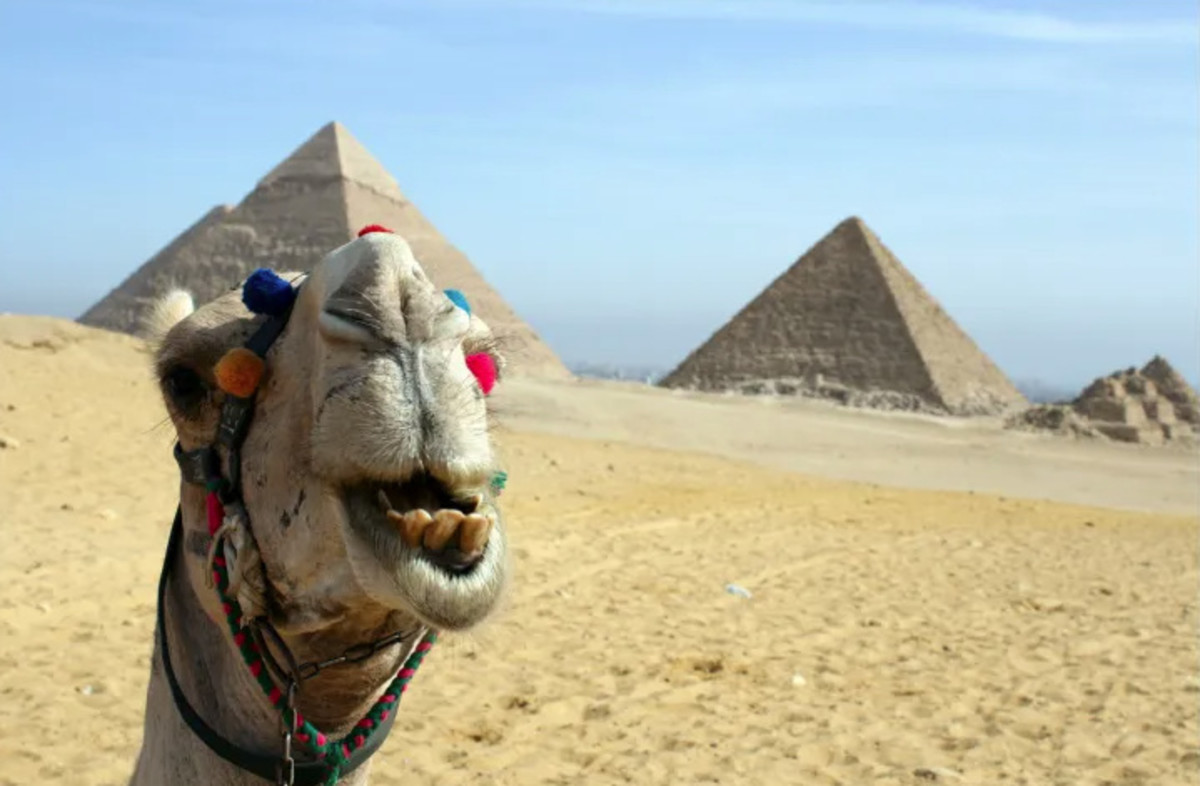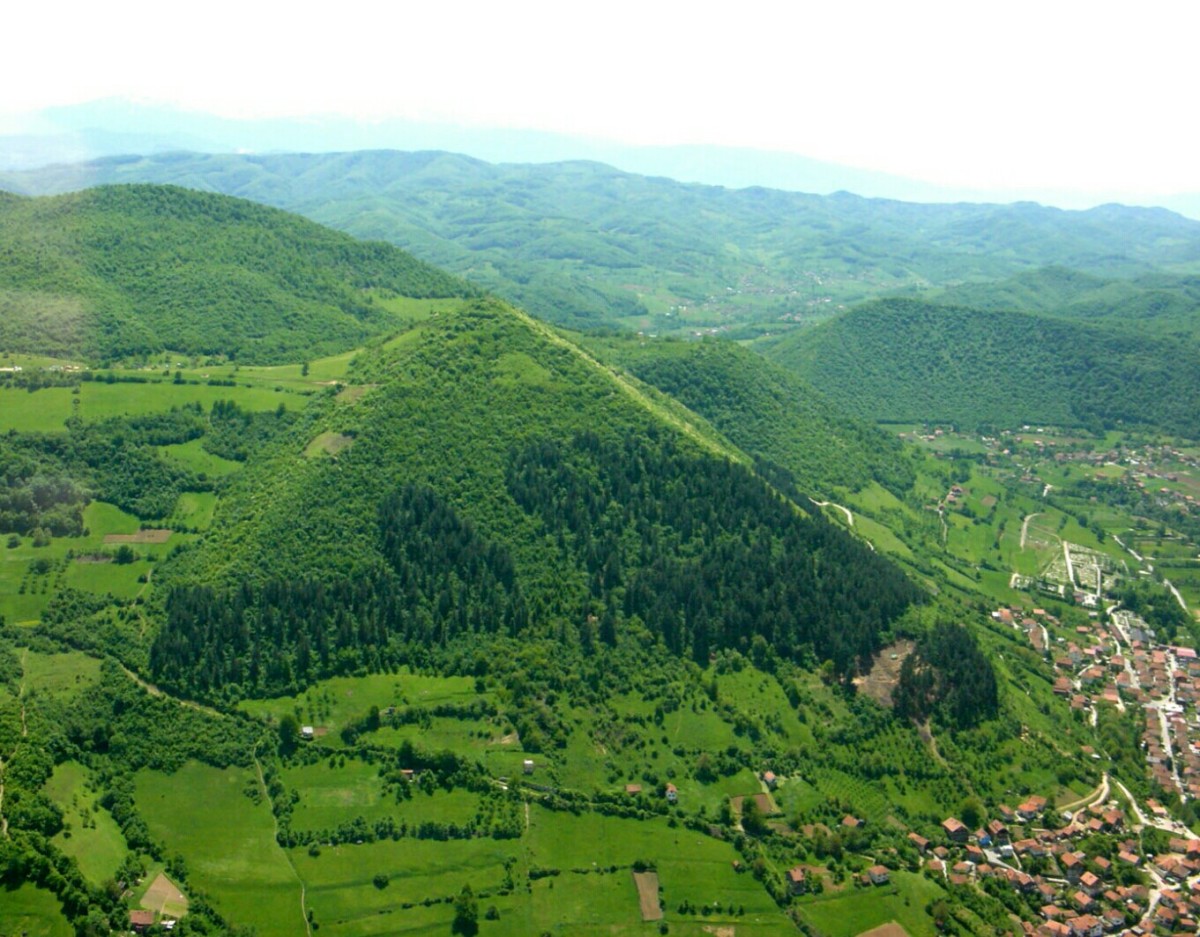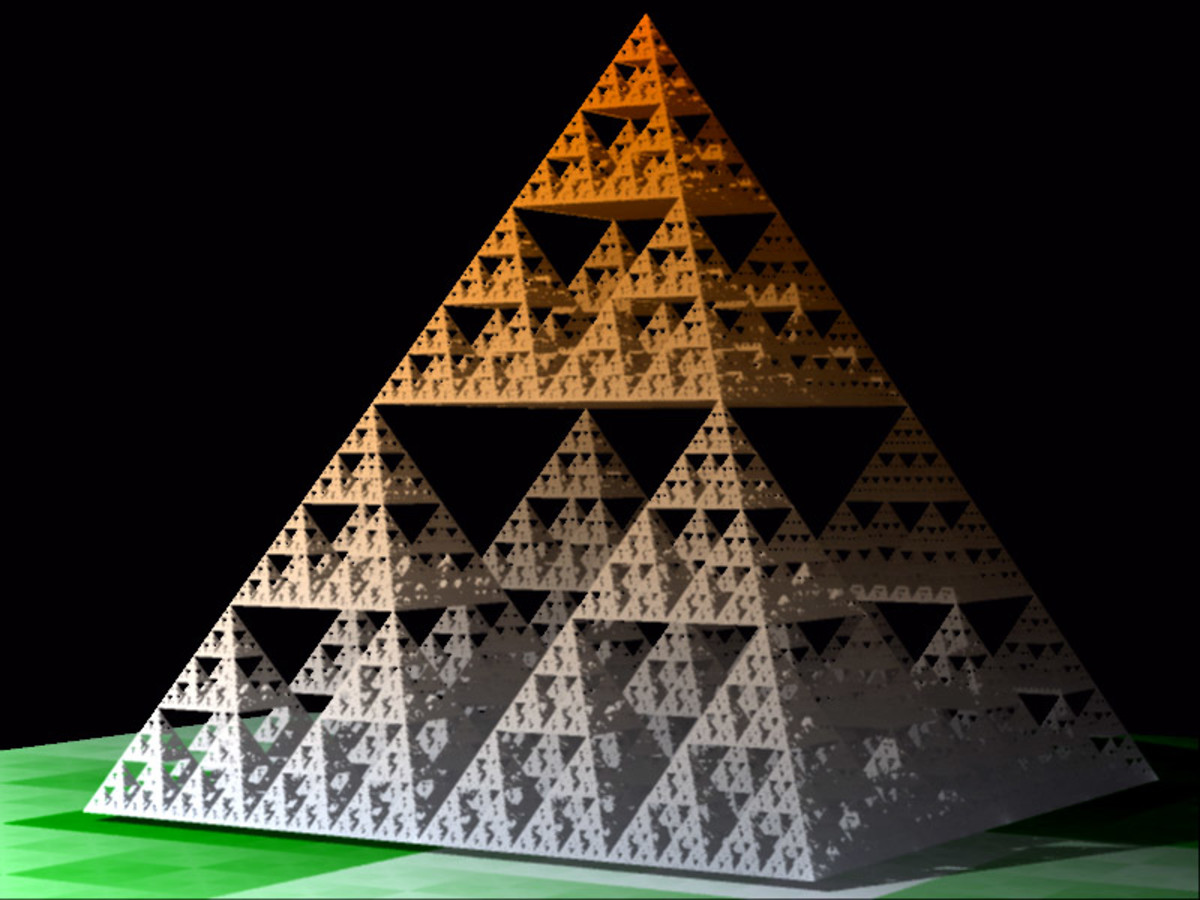- HubPages»
- Travel and Places»
- Visiting Africa»
- Travel to Northern Africa
Egypt Part 2: The Giza Plateau
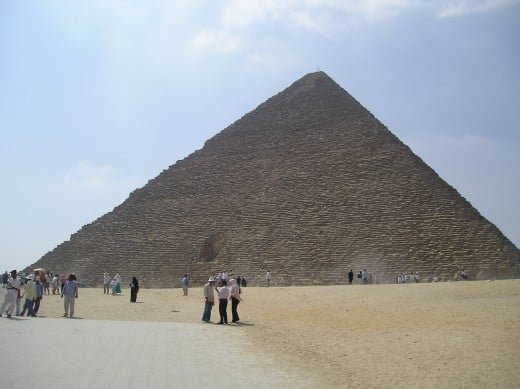
As we checked out of the Cataract Pyramids Resort, our guide, Ayman Nagy Ahmed, arrived with his driver, and as promised by Magdy we were soon in our well appointed private bus and heading for the Giza plateau. He turns out to be a PhD candidate in Egyptology, and gives us a gradual overview of Egypt. The official language is Arabic, and the population is 17% Christians (mainly Coptic) and 83% Muslim.
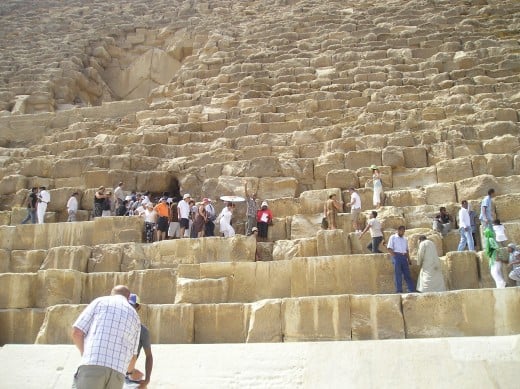
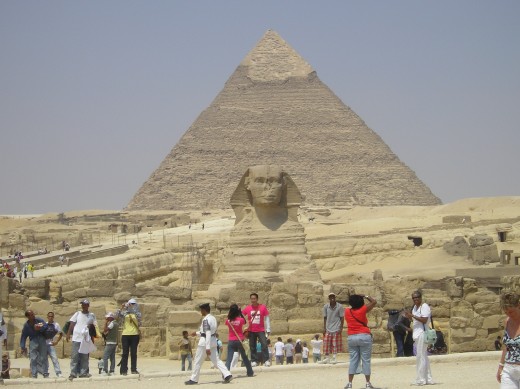
Cairo gets no rain, no more than 20 mm, yet it sits on the Nile and has lush green fields watered by canals from the great river. Egypt is the Nile, the longest river in the world. As an irrigation source the Nile provides vital water for cotton, rice, sugar cane, wheat and other crops; the Nile is the life of Egypt.
The population of Cairo is 22 million, and the city welcomes 3 million visitors every day. Tourism accounts for 35% of Egypt's national income.
Looking around I could see that Cairo was a busy place to live and work. Opulence shoulder to shoulder with poverty jostled in the dusty, dirty, streets. Something dynamic, secret, and yet progressive was taking place. Money could be made in Egypt. People are on the move.
My wife needed to purchase a pair of comfortable footwear for the desert, a pair of sneakers, so Ayman found a store selling ‘Chinese’ shoes (brand name merchandise made in China and sold cheaper than the brands). We shelled out 75 Egyptian pounds (LE) which we thought a bargain, and resumed the journey to the desert.
Sure enough, after a few more minutes of Cairo traffic, I see the iconic landmarks of the vast necropolis looming in the mid morning glare, geometric solids in the silent sands, the world famous complex that pulled us half way around the world, the Pyramids of Egypt.
The pyramids are tombs of the pharaohs who ruled ancient Egypt as veritable sun-gods. The ancient Egyptians believed in a multiplicity of gods, and the king himself was a son of the sun-god. When a pharaoh dies he begins the most important journey in the afterlife, so his pyramid as well as the decorations and writings on the tomb walls were calculated to continue the cosmic cycle whereby the king joined the company of gods, and the land would continue to be watered by the Nile, its people assured that their dead leader had passed successfully into the afterlife.
Then moment he ascended to leadership the king started to plan his burial tomb, the pyramid. Other forms of entombment have been identified, but the pyramid tombs were in use between 2630 and 1640 BC. The Great Pyramid of Giza contains about 6.25 million tons of stone, with individual blocks weighing between 2 and 15 tons. A highly skilled workforce would have been required to produce material and perform the amazing construction for over 20 years, even more.
King Khufu or Cheops of the Fourth Dynasty chose the limestone plateau of Giza for his funerary monument for four possible reasons: the grand view; availability of limestone; and across the Nile the nearby Tura quarry had the finer white stone used for the casing.
One of the seven wonders of the ancient world, King Khufu’s pyramid is over 4500 years old and is the largest and northernmost of the three main pyramids in this complex. Time and the desert has eroded the pointed top and casing from this dominant monument of rock. It is 231 m wide and rises at an angle of 51 degrees 52’ to 137 m, about 9 metres below its original height of 146.6 metres.
People have a way of overstating everything when they warn you about Egypt. The desert was hot but tolerable. The desert is a desert is a desert so there was sand, but it was sand, not a sandstorm. After all the hype, from scholars as well as common garden tourists, you expected them to be larger, your modern senses already benumbed by the skyscrapers of Manhattan. Later in the trip I would learn how the stone blocks were transported to the dizzying heights.
Ayman warned us to avoid photographing the police, and shared with us the fine art of relating to the touts who picked on unwary tourists. Sellers of hats and souvenirs offered their merchandise with polite greetings. My darling bought a hat which you will see us wearing in some of the photographs. Poor dear, she hates hats, gave it to me upriver. We climbed the steps of the Great Pyramid but our guide advised us to desist from entering the narrow passageway to the bowels of the monument because of health reasons. So many tourists going down into the foul air in a time of international health crisis and he did not have to tell me twice.
The second pyramid is the Pyramid of Khephren, and was known to the ancient Egyptians as Wer-kefre meaning "Great is Khephren”. Kephren’s monument is identified by the casing stones that remain un-eroded at the apex.
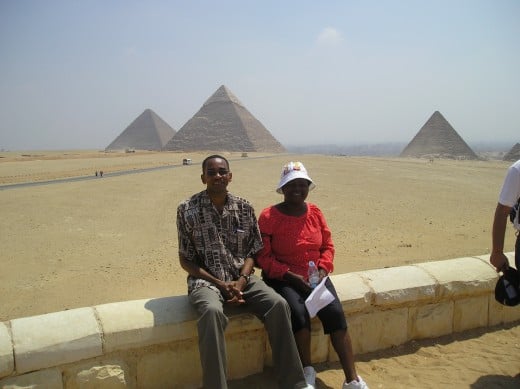
The Pyramid of Mycerinos is the third wondrous structure at Giza; the original height was 66.5 metre but now eroded to 62 m.
All three pyramids had their entrances on the northern face and funerary temples on the eastern face. The Great Sphinx is part of the funerary complex of Khephren. The lion-maned sphinx gazes eastward and you negotiated a maze of narrow halls to climb up to get a good three quarters angle. Tourists took delight in the old camera trick of appearing to touch the monuments in the background.
On the southern side are three smaller pyramids, left unfinished, for relatives of the pharaoh.

